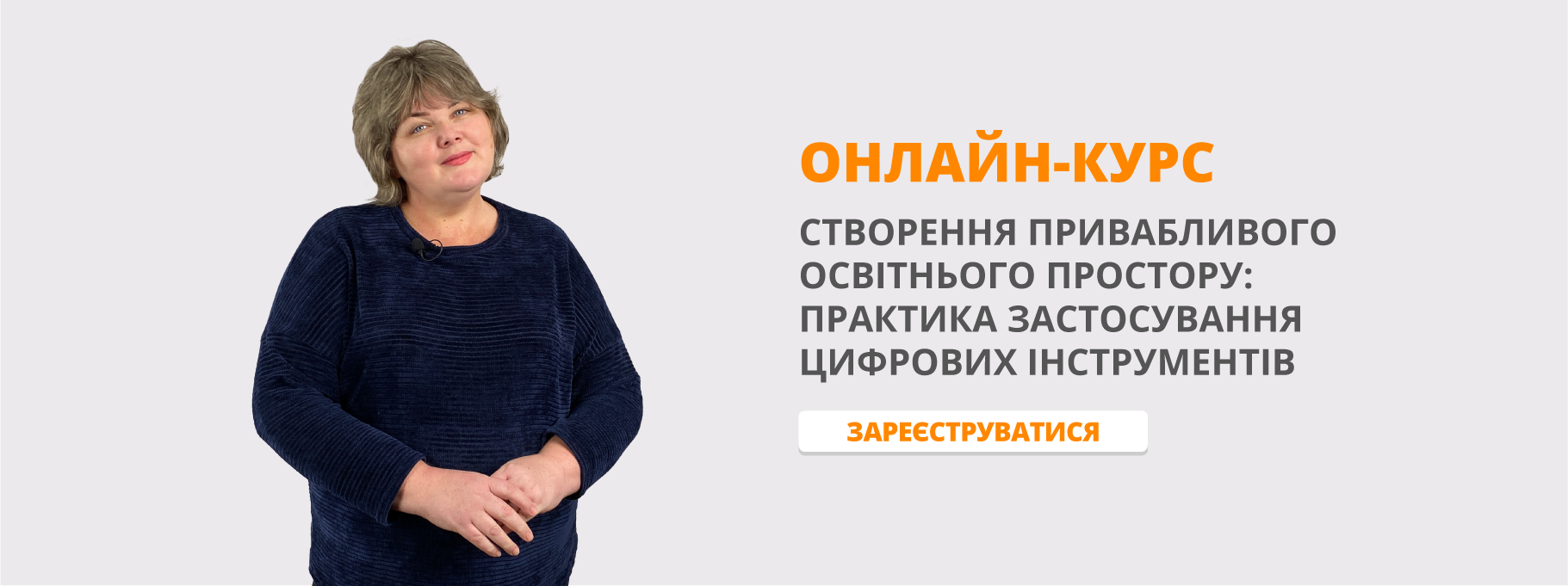Розробка тижня англійської мови
Звіт про проведення тижня англійської мови
З 26.02.2018 – 02.03.2018 р. в Юнаківській загальноосвітній школі I-III ступенів проходив тиждень англійської мови. Тиждень розпочався загальношкільною лінійкою, на якій учнів ознайомили з завданнями та планом проведення основних заходів. Впродовж тижня було проведено ряд різноманітних та цікавих заходів: інтелект-шоу: «Хто знає англійську краще?», вікторина: «Найрозумніший», Брейн-ринг «Цікава англійська», конкурс на найкращий малюнок/ стіннівку: «Piece Is Possible»; «The Earth Day»; «My Favourite Food»; «My Favourite Film»; «The School Of My Dream»; «Places Of Interest In London», відкритий виховний захід: «День Святого Патріка», урок – віртуальна подорож «Welcome to London!», відкритий урок у 8 класі на тему: «Музика у моєму житті» та інше.
Вивчення іноземної мови – процес складний, але багатогранний і цікавий. Оволодіння іноземною, а саме англійською мовою є потребою часу. Для підвищення інтересу до вивчення англійської мови однієї урочної роботи не досить, тому тут значну роль відіграють різні позакласні та позаурочні форми роботи. Однією з таких форм позакласної роботи є проведення предметних тижнів.
Після проведення тижня були підведені підсумки. Найактивніші учасники тижня англійської мови були нагороджені на лінійці почесними грамотами, призами. Всім учасникам була оголошена подяка, виставлені відповідні оцінки з англійської мови. Вчитель висловив своє задоволення результатом проведення тижня англійської мови, успіхами учнів.
Отже, проведення предметного тижня не тільки поглибило знання з англійської мови, а й стало джерелом позитивних емоцій, мобілізації творчих зусиль і, як наслідок, підвищило мотивацію до вивчення мови та культури іншої країни.
Мета проведення тижня англійської мови:
Практична: оволодіння мовним матеріалом для вільного спілкування в усному та писемному мовленні; уміння виконувати проектні роботи, творчі завдання, складати та розгадувати ребуси та кросворди; оволодіння знаннями про культуру та традиції англомовних країн.
Освітня: формування комунікативних умінь: уміння слухати співрозмовника, реагувати на його мову, починати, підтримувати і завершувати розмову; формування особистості через залучення до культури і побуту іншого народу, через виховання доброзичливого, поважного ставлення до всіх людей, незалежно від мови, якою вони говорять, через вироблення норм поведінки у суспільстві; формування розуміння значення іноземної мови у суспільстві, залучення учнів до діалогу культур.
Виховна: виховання культури спілкування, розширення світогляду; виховання толерантного ставлення до інших культур, розвиток позитивних якостей; розвиток творчого рівня вихованців.
![]()
![]()
![]()
![]()
Юнаківська загальноосвітня школа I-III ступенів
Сумської районної ради
Сумської області
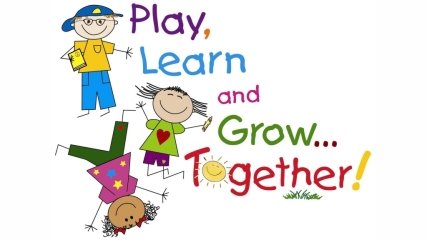
Тиждень
англійської мови
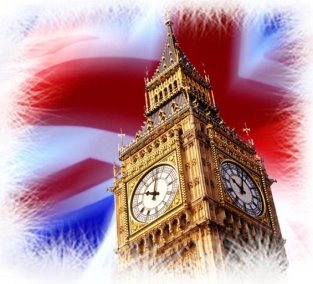
Розробила:
вчитель німецької та англійської мов
Петрачок Євгенія Володимирівна
Юнаківка – 2018 рік
Звіт про проведення тижня англійської мови
З 26.02.2018 – 02.03.2018 р. в Юнаківській загальноосвітній школі I-III ступенів проходив тиждень англійської мови. Тиждень розпочався загальношкільною лінійкою, на якій учнів ознайомили з завданнями та планом проведення основних заходів. Впродовж тижня було проведено ряд різноманітних та цікавих заходів: інтелект-шоу: «Хто знає англійську краще?», вікторина: «Найрозумніший», Брейн-ринг «Цікава англійська», конкурс на найкращий малюнок/ стіннівку: «Piece Is Possible»; «The Earth Day»; «My Favourite Food»; «My Favourite Film»; «The School Of My Dream»; «Places Of Interest In London», відкритий виховний захід: «День Святого Патріка», урок – віртуальна подорож «Welcome to London!», відкритий урок у 8 класі на тему: «Музика у моєму житті» та інше.
Вивчення іноземної мови – процес складний, але багатогранний і цікавий. Оволодіння іноземною, а саме англійською мовою є потребою часу. Для підвищення інтересу до вивчення англійської мови однієї урочної роботи не досить, тому тут значну роль відіграють різні позакласні та позаурочні форми роботи. Однією з таких форм позакласної роботи є проведення предметних тижнів.
Після проведення тижня були підведені підсумки. Найактивніші учасники тижня англійської мови були нагороджені на лінійці почесними грамотами, призами. Всім учасникам була оголошена подяка, виставлені відповідні оцінки з англійської мови. Вчитель висловив своє задоволення результатом проведення тижня англійської мови, успіхами учнів.
Отже, проведення предметного тижня не тільки поглибило знання з англійської мови, а й стало джерелом позитивних емоцій, мобілізації творчих зусиль і, як наслідок, підвищило мотивацію до вивчення мови та культури іншої країни.
Мета проведення тижня англійської мови:
Практична: оволодіння мовним матеріалом для вільного спілкування в усному та писемному мовленні; уміння виконувати проектні роботи, творчі завдання, складати та розгадувати ребуси та кросворди; оволодіння знаннями про культуру та традиції англомовних країн.
Освітня: формування комунікативних умінь: уміння слухати співрозмовника, реагувати на його мову, починати, підтримувати і завершувати розмову; формування особистості через залучення до культури і побуту іншого народу, через виховання доброзичливого, поважного ставлення до всіх людей, незалежно від мови, якою вони говорять, через вироблення норм поведінки у суспільстві; формування розуміння значення іноземної мови у суспільстві, залучення учнів до діалогу культур.
Виховна: виховання культури спілкування, розширення світогляду; виховання толерантного ставлення до інших культур, розвиток позитивних якостей; розвиток творчого рівня вихованців.
Лінійка на відкриття тижня англійської мови
Attention, attention! Увага, увага!
At last we have an English week at Yunakinka school!
Нарешті в Юнаківській загальноосвітній школі – тиждень англійської мови!
It’s a good opportunity to practice the language of the world.
Це чудова можливість для практики найпоширенішої мови світу.
Because there are 350 million English native-speakers.
Адже у світі близько 350 мільйонів людей є носіями англійської мови.
English is the second language for 300 million people.
300 мільйонів, для котрих англійська – друга державна мова.
About billion people learn English as a foreign language.
І близько мільярда людей вивчають англійську мову як іноземну.
50% of contracts are written in English.
50% всіх угод у світі укладаються англійською мовою.
This language is spoken by scientists, pilots, computer programists, statesmen and tourists.
Саме цією мовою говорять вчені, льотчики, комп’ютерні експерти, дипломати та туристи. Це – мова світу. І це – прекрасно!Це дає можливість побачити світ.
Крім приємних подорожей, англійська допоможе вам в організації та в розвитку власної справи. Тільки уявіть, з кількома людьми з шести мільярдів, що живуть на Землі ви зможете спілкуватися. Їх кількість – безмежна! Друзі по всьому світу – це допомога у важких ситуаціях за кордоном, це тепла зустріч в аеропорту та нескінченні розмови у скайпі. Знаючи мову, ви зможете дивитися фільми в оригіналі, слухати музику і розуміти, що співак хотів до вас донести, а також читати безліч цікавих книг та журналів, які не видали українською.
Don’t miss your chance! Study and practice!
План проведення тижня англійської мови
у Юнаківській загальноосвітній школі I-III ступенів
Сумської районної ради Сумської області
з 26.02.2018 – 02.03.2018
|
Час проведення |
Зміст заходу |
Клас
|
|
|
Понеділок |
|||
|
Під час перерви |
Відкриття предметного тижня. Оголошення завдань та плану проведення основних заходів |
1-11 |
|
|
Протягом тижня |
Конкурс «Найохайніший зошит» |
2-11 |
|
|
7 урок |
Інтелект-шоу: «Хто знає англійську краще?» |
5-6 |
|
|
Вівторок |
|||
|
3 урок |
Відкритий урок у 8 класі на тему: «Музика у моєму житті» |
8 |
|
|
7 урок |
Вікторина: «Найрозумніший» |
7-8 |
|
|
Середа |
|||
|
7 урок |
Брейн-ринг «Цікава англійська» |
6-7 |
|
|
Протягом тижня
|
Конкурс на найкращу ілюстрацію «Магічний світ англійських казок» |
3-5 |
|
|
Четвер |
|||
|
Протягом тижня |
Конкурс стінніок:
|
5-11
|
|
|
7 урок |
Відкритий виховний захід з англійської мови: «День Святого Патріка» |
5-7 |
|
|
П’ятниця |
|||
|
7 урок |
Урок – віртуальна подорож «Welcome to London!» |
1-11 |
|
|
Підсумок тижня. Нагородження переможців |
|
||
Інтелект-шоу «Хто знає англійську краще?»
(5-6 класи)
Мета: удосконалювати навики виразного читання, письма, розвивати творчий підхід до вирішення тих чи інших завдань, вміння вести пошукову роботу, підвищувати інтерес до вивчення англійської мови.
Обладнання: загадки, вірш, грамоти, подарунки.
Хід заходу
1. Вітання з учнями.
The sun is shining.
The stars are smiling.
Hello, my dear friends.
Today we have a very interesting contest in English. There are two teams. Their names are… Every game has the highest point 5. You should be very quick.
2. Представлення команд.
T. Every team has to say about themselves (names, hobbies).
3. Повідомлення теми виховного заходу.
Motto of our contest is:
English is wonderful.
English is great,
We can travel to England
By plane or by train.
4. Римування.
|
I team |
|
II team |
|
|
Fox |
Ten |
fat |
snake |
|
Cat |
Mat |
kite |
frog |
|
Pen |
Sky |
cake |
cat |
5. Добери прикметники до іменників.
Завдання для двох команд.
|
Grey |
Grass |
|
Little |
Apple |
|
Blue |
Cat |
|
Green |
Sky |
|
Red |
girl |
|
Tall |
Sun |
|
Yellow |
man |
6. Скласти речення із даних слів.
I team
1. A yellow, tree, in, is, the, bee.
2. A room, red, is, a, table, in.
II team
1. A red, is, box, in, the, fox.
2. Cat, on, is, the, a, white, mat.
7. Відгадати назву тваринки.
I team
xof; ckud; noil; raeb; ooragnak; tnahpele;
II team
flow; tibbar; yeknom;effarig; ekans; nihplod
8. Добери кольори і заповни пропуски.
I team
Spring is …
Summer is …
Autumn is …
Winter is …
II team
The sun is …
The cloud is …
The flower is …
The butterfly is …
9. Загадки.
I can be thin or thick.
I have a lot of pieces of paper.
I usually have pictures, too.
You can read me.
Я можу бути тонкої або товстої
У мене багато папірців.
Зазвичай у мене є і картинки теж.
Ви можете читати мене.
Відповідь: а book – книга
I’m usually round.
I have two hands.
I hang on the wall.
I can tell you the time.
Ми зазвичай круглі.
У нас дві руки.
Нас вішають на стіну.
Ми можемо повідомити вам час.
Відповідь: clock – годинник
I am small.
I am usually white.
You can take away your pencil marks with me.
Я маленький.
Я зазвичай білий.
Ви можете стерти олівець з моєю допомогою.
Відповідь: ластик – eraser / rubber
I’m in the living room.
You can sit in me.
I am soft.
I have arms.
Я перебуваю у вітальні.
Ви можете сидіти в мені.
Я м’яке.
У мене є ручки.
Відповідь: крісло — armchair
I am made of glass.
I hang on the wall.
You often look at me.
You can see yourself in me.
Я зроблено зі скла.
Я важу на стіні.
Ти часто дивишся на мене.
Ти можеш побачити себе в мені.
Відповідь: дзеркало mirror.
I am on the wall.
I am dark.
I am usually black or green.
You can write on me with chalk.
Я на стіні.
Я темна.
Я зазвичай чорна або зелена.
Ви можете написати мені крейдою.
Відповідь: шкільна дошка – a blackboard.
I have teeth.
I’m made of metal.
You use me to eat.
You pick up food with me.
У мене є зуби.
Я зроблена з металу.
Ти використовуєш мене, коли їси.
Ти береш мною їжу.
Відповідь: a fork – вилка.
I need electricity.
I have a screen.
I can send email.
You can play games on me.
Мені потрібно електрику.
У мене є екран.
Я можу надіслати електронну пошту.
Ви можете грати в ігри на мені.
Відповідь: a computer – комп’ютер
I am long.
I am made of plastic or wood.
You can use me for drawing straight lines.
You can measure things with me.
Я довга.
Я зроблена з пластику або дерева.
Ви можете використати мене для малювання прямих ліній.
Ви можете виміряти речі з моєю допомогою.
Відповідь: лінійка — a ruler
I’m often made of wood.
I have four legs.
You eat on me.
You put a cloth on me.
Я зроблений з дерева.
У мене чотири ноги.
Ви їсте на мені.
Ви застилаєте мене скатертиною.
Відповідь: стіл – a table
I have a ball shape.
I have one leg to stand on.
I have the map of the world.
I am very useful on Geography lesson.
Я маю форму кулі.
У мене одна нога, я на ній наполягаю.
У мене є карта світу.
Я дуже корисна на уроці географії.
Відповідь: глобус – а globe
I am a room.
I have a sink.
I have a stove.
You use me for cooking.
Я кімната.
У мене є раковина.
У мене є плита.
Ви використовуєте мене для приготування їжі.
Відповідь: a kitchen — кухня
I am made of metal.
You eat steak with me.
I am sharp.
You use me to cut.
Я зроблений з металу.
Ви їсте стейк з моєю допомогою.
Я гострий.
Ви використовуєте мене, щоб різати.
Відповідь: ніж – a knife
10. Гра «Всезнайки».
1. How many days are in a week?
2. What day is after Friday?
3. What day has a letter M?
4. How do we name a place where we study?
5. What holiday do English people celebrate on the 25 th of December?
6. Where do they put presents?
7. What do people decorate?
8. What do people sing on Christmas?
11. Гра «Зайве слово
Учасникам команди прикріпляються картки за словами, визначити «зайвого»
1. peach, pear, chicken, apple, banana
2. tail, cat, mouse, dog, rabbit
3. bird, airplane, kite, helicopter, bus
4. red, sun, green, purple, brown
5. cold, warm, dry, sky, cloudy
12. Підсумок вікторини. Виставлення балів та визначення переможців.
T. Did you like our competition ? Now let’s have a little rest. Make a circle and dance to a happy English song.
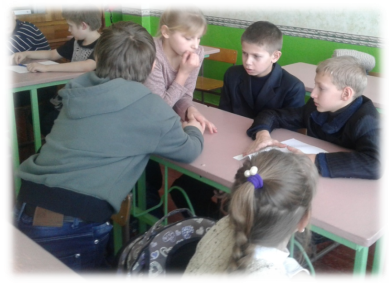
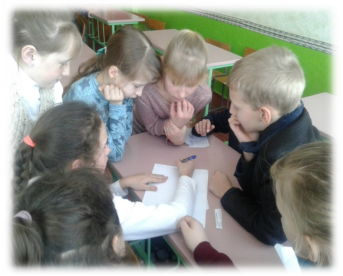
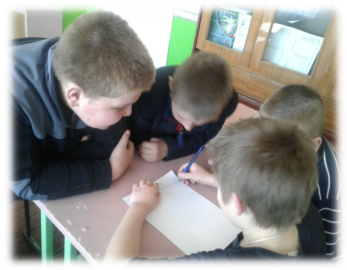
Брейн-ринг «Цікава англійська»
(6-7класи)
Мета:
Практична: розвивати вміння сприймати іноземну мову на слух, вдосконалювати лексико - граматичні навички.
Виховна: виховувати інтерес до вивчення предмета, ініціативність та активність, повагу до культури і традицій інших народів.
Розвиваюча: розвивати творчі та комунікативно-ігрові здібності,тренувати пам`ять, увагу , мислення.
Освітня: формувати країнознавчі та соціокультурні знання.
Форма заходу: вікторина - змагання
Обладнання: CD диск з музикою, роздатковий матеріал (емблеми, таблички з номерами, зірки)
Хід змагання:
- Організаційний етап.
Teacher (Т): Good afternoon, dear boys and girls! Good afternoon, dear guests! We’re glad to see you in our intellectual competition.
Рlayers will take part in a game to prove that they are the best, the most quick-witted, the cleverest. То answer the question “who’s the best?”, our players will have to come through 4 rounds of the competition.
- Пояснення правил змагання:
- • The competition consists of 4 rounds.
- • Players answer the questions, raising numbers they have: from 1 to 4.
- • You can get a star for each correct answer.
- • Teams who have the most numbers of stars enter the next round.
- • The first student, who gives the correct answer, gets an extra star.
- • You’ll get instructions before each tour.
- Представлення команд
Т: Now let’s learn the teams’ names of our players. Don’t forget that you can get a star for the most interesting and original introduction.
І тур
В першому турі гравці відповідають на 10 запитань, вибирають правильну відповідь на запитання, піднімаючи картки з номерами правильних відповідей.
1. What holiday don’t we celebrate in Ukraine?
1) Boxing Day
2) New Year
3) Christmas
4) St. Valentine Day
2. When is Christmas Day in Great Britain and Western Europe?
1) December 25th
2) January 25th
3) December 26th
4) January 7th
3. Which two colours are the traditional colours of Christmas?
1) blue and pink
2) red and green
3) yellow and pink
4)white and green
4. What happens at 3 o’clock in the afternoon on Christmas Day in Britain?
1) Santa Claus comes
2) Queen congratulates the nation
3) Children sing carols
4) Family decorate a Christmas tree
5. What do British people traditionally eat for Christmas dinner?
1) fish and pudding
2) turkey and pudding
3) turkey and jelly sandwiches
4) fish and cake
6. Why is December 26th also called Boxing Day? Because...
1) there are Christmas boxing shows on TV
2) people put presents and money into boxes for poor families
3) all presents must be put into boxes
7. Where is there a New Year tradition to throw old things out the window?
1) France
2) Germany
3) Australia
4) Italy
8. Where do people celebrate New Year in February?
1) Germany
2) Great Britain
3) Australia
4) China
9. What does a word “heart” mean?
1) свічка
2) серце
3) Купідон
4) подарунок
ІІ тур
Зіставити прислів’я
Учні виконують завдання, підбираючи правильний переклад до прислів’я. Потім по черзі читають відповіді, якщо команда помилилась, то черга переходить до іншої команди (за кожну правильну відповідь команда отримує зірку).
|
1) A bird may be known by its song |
a) Друг пізнається в біді. |
|
2) A black hen lays a white egg |
b) Краще синиця в жмені, ніж журавель в небі. |
|
3) A cat with nine lives |
c) Скажи мені, хто твій друг, і я скажу, хто ти. |
|
4) A dog in the manger |
d) В здоровому тілі здоровий дух. |
|
5) A friend in need is a friend indeed |
e) Видно птаха по польоту |
|
6) A gift in the hand is better than two promises |
f) Чорна курка несе білі яйця. |
|
7) A man is known by the company he keeps |
g) Живучий, як кішка. |
|
A sound mind in a sound body |
8) h) Собака на сіні. |
Key for teacher;
A bird may be known by its song — Видно птаха по польоту.
A black hen lays a white egg — Чорна курка несе білі яйця.
A cat with nine lives — Живучий, як кішка.
A dog in the manger — Собака на сіні.
A friend in need is a friend indeed — Друг пізнається в біді.
A gift in the hand is better than two promises — Краще синиця в жмені, ніж журавель в небі.
A man is known by the company he keeps — Скажи мені, хто твій друг, і я скажу, хто ти.
A sound mind in a sound body — В здоровому тілі здоровий дух.
ІІІ тур
Кросворд
Командам пропонується розгадати кросворди, та команда, яка першою виконала завдання, нагороджується зіркою.
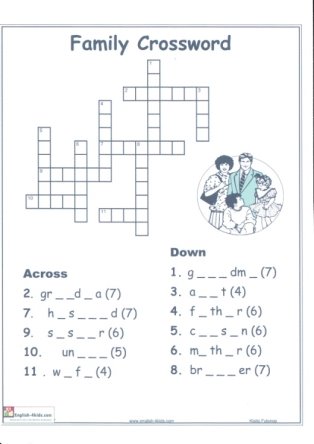
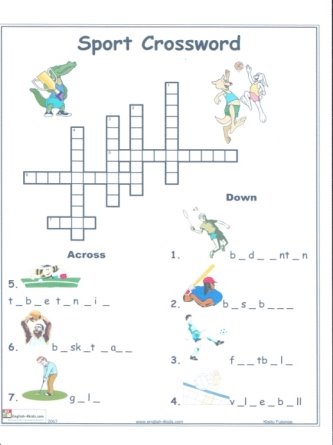
4. Підведення підсумків. Переможці нагороджуються грамотами.
Т: Ok, time passed very quickly. And now we know the winner. Let’s count your stars. The team ... is winner today! How do feel? Can you tell us? Thank you for the game!
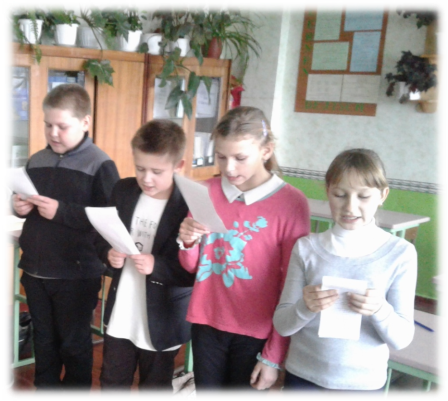
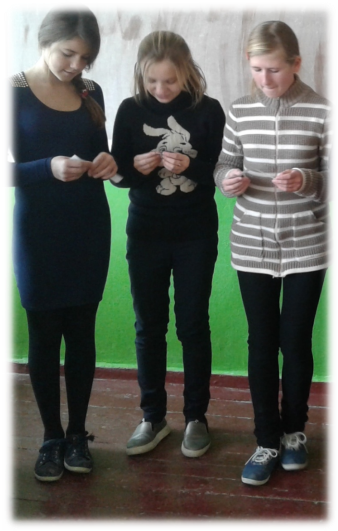
Вікторина: «Найрозумніший»
Вступне слово вчителя.
Dear boys and girls!
Glad to see you at our game “The Cleverest”. The participants of the game are the pupils of the 7th and 8th forms. They like English very much and today they will show us their knowledge of the English language.
Now listen to the rules of the game:
- the game consists of three rounds;
- each round includes some questions and three variants of the answers;
- you must choose the right answer;
- when the round is over the jury will check up your answers. Only six of you will go to the second round and then only three of you will go to the third round. The winner of the game will get a prize.
And now let me introduce the jury ...
Let's get acquainted with the participants of the game ...
THE FIRST ROUND
1. What is the first holiday in a year? a) Christmas Day
- New Year's Day
- Veterans' Day
2. Where is London situated ?
- on the Severn
- on the Thames
- on the Avon
3. How many parts does London consist of?
- four
- three
- five
4. How often do winter Olympic Games take place?
- every four year
- every ten year
- every five year
5. Where did the first Olympic Games take place?
- in England
- in Moscow
- in Greece
6. What do children have after the New Year's Day?
- summer holidays
- spring holidays
- winter holidays
7. Who brings presents at night for Ukrainian children?
- Father Frost
- St. Nicholas
- Cinderella
8. What is the most popular outdoor winter sport?
- chess
- skiing
- football
9. What is the great national sport in the USA?
- basketball
- football
- cricket
10. What do spectators do at the stadiums?
- sing songs
- watch sports matches
- recite poems
11. When do we celebrate Willow Sunday or Verbna Nedilya?
- on the last Sunday before Easter
- on Sunday after Easter
- on the last Saturday before Easter
12. What is the official name of Great Britain?
a) the United Kingdom of Great Britain
b) the United Kingdom of Great Britain and Northern Ireland
c) Great Britain
13. What does «Great Britain» mean in everyday speech?
- England
- England and Wales
- the United Kingdom
14. What is the capital of Great Britain?
- Manchester
- Liverpool
- London
I5.What does Great Britain consist of?
a) England, Wales and Northern Ireland
- England and Scotland
- England, Scotland and Wales
16. When do the Ukrainians sing carols?
- at Makovii
- at Easter
- at Christmas
Key: 1b; 2b; 3a; 4a; 5c; 6c; 7a; 8b; 9a; 10b; 11a; 12b; 13c; 14c; 15c; 16c
THE SECOND ROUND
l. What do English people usually talk about when they meet?
- the weather
- the money
- the hot-dog
2. What is the commercial centre of London?
- the City
- the West End
- the East End
3. What is the administrative centre of London?
- the City
- the Westminster
- Piccadilly Circus
4. What is the seat of English Government?
- the Trafalgar Square
- the Houses of Parliament
- Regent Street
5. What are Britain's national sports?
- cricket, basketball, chess
- cricket, football, tennis
- football and cricket
6. What is a popular cricket ground?
- Dinamo
- Lord's
- Big Ben
7. What kind of sports are brothers Klychko famous for?
- fencing
- chess
- boxing
8. What is the longest river in Great Britain?
- the Thames
- the Spey
- the Severn
9. What is the highest mountain in Great Britain?
- Snowdon
- Ben Nevis
- Rock
10. Where is Scotland situated?
- in the south of Great Britain
- in the north of Great Britain
- in the centre of Great Britain
- What is the capital of Scotland?
- Glasgow
- Edinburgh
- Belfast
12. What is the largest city of Scotland?
- Edinburgh
- Glasgow
- Oban
13. Where was William Shakespeare born?
- in Stratford-on-Avon
- in London
- in Birmingham
14. Where was Robert Burns born?
- in England
- in Wales
- in Scotland
15. Who wrote the novel «Jane Eyre»?
- George Gordon Byron
- Charlotte Bronte
- Alan Marshall
16. What did Zaporizhyan Cossacks cherish above all?
- money
- freedom
- power
Key: 1a; 2a; 3b; 4b; 5c; 6b; 7c; 8c; 9b; 10b; 11b; 12; 13a; 14c; 15b; 16b.
THE THIRD ROUND
1. Where do the English people come to meet the New Year?
- to the City
- to the Clock Tower
- to the St. Paul's Cathedral
2. When did the English people build Clock Tower?
- in 1788
- in 1858
- in 1658
3. When did the first Olympic Games take place?
- 600 years ago
- 300 years ago
- 800 years ago
4. When did the modern Olympic Games begin?
- in 1896
- in 1796
- in 1969
5. What kind of sports is Anna Kurnikova famous for?
- figure-skating
- swimming
- tennis
6. How is the flag of the United Kingdom called?
- Union jack
- the Jack Union
- the flag of crosses
7. How are the people who live in Scotland called?
- Scots or Scottish
- Scotch
- Scotlandish
8. What is the centre of steel industry of England?
- Coventry
- Sheffield
- Liverpool
9. What is the centre of textile industry of England?
- Manchester
- Birmingham
- London
10. What is the oldest university town in England?
- Cambridge
- London
- Oxford
11. How was Shakespeare's theatre called?
- the Earth
- the Globe
- the Sun
12. What was Kipling's father?
- a painter
- a writer
- a singer
13. What tribe did the Britons belong to about 2.000 years ago?
- Angles
- Saxons
- Celts
14. Whom was Britain conquered by in the first century before our era?
- by the Romans
- by the Americans
- by the Italians
Key: 1b; 2b; 3a; 4a; 5c; 6a; 7b; 8b; 9a; 10c; 11b; 12a; 13c; 14a.
Let’s have a rest.
Understand me
It’s a famous kind of a competition and four members of each team can try their abilities in miming. Take a card with a word on it and mime it to another team. Their task is to recognize the word correctly. For each correct word you’d get a point.
1. lemon 1. kettle
2. tennis 2. badminton
3. flower 3. cooking
4. to drive 4. mineral water
Making words
Do you know English alphabet well? Let’s check this in our next task. Each member of your team gets a letter. You have to listen to the words and make up them correctly near the teacher.
Ancient – nine, tie, tea, nice, ant, cat, ten, can, ice.
Find the opposites
Throwing the ball with tennis racket run to the table, do the task and come back quickly. You have to find opposites for the words.
Clever – stupid
Long – short
Hard-working – lazy
Big – small
Black – white
Fast – slow
Good- bad
Заключне слово вчителя.
Our competition is coming to the end
The score of the first team is... The score of the second team is...
So, the winner is the team... Our congratulations! Thanks a lot to all the participants of the competition.
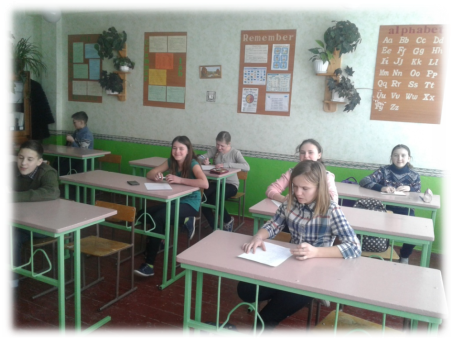
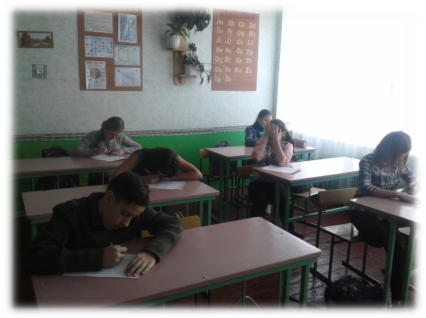
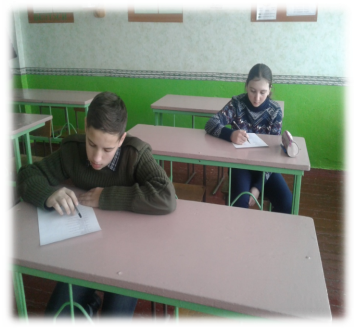
Позакласний захід з англійської мови
«День Святого Патріка»
Мета:
- Ознайомити учнів з історією, символами і традиціями святкування Дня Святого Патріка в Ірландії та інших країнах.
- Розширити філологічний та лінгвокраїнознавчий світогляд учнів, залучати до діалогу культур.
- Сприяти розвитку логічного мислення та слухової і зорової пам’яті, розвивати вміння логічно викладати свої думки.
- Виховувати шанобливе ставлення до традицій інших народів; пізнавальний інтерес до вивчення англійської мови
Обладнання : презентація Power Point, постери та плакати із зображенням символів свята, відео «The history of St Patrick’s Day».
Хід свята
Teacher: Ladies and gentlemen, boys and girls! Good afternoon! It's lovely to meet you here at our festival of English devoting to St. Patrick’s Day. Today you will know how this day is celebrated in Ireland, about traditions connected with this holiday, about St Patrick and I hope you will enjoy our performance. So let’s begin.
(slide 2) This holiday is celebrated every year on March 17th, honoring the Irish patron saint, St. Patrick.
(slide 3) Who is St. Patrick? The patron saint and national apostle of Ireland.
- St. Patrick really existed
- Born in the forth century in Britain
- Taken to Ireland as a slave at the age of 16
- Escaped after six years
- Became a Christian priest, and later a Bishop in Ireland
- Returned to Ireland as a missionary
- Played an important role in the transformation of Irish Christianity
- According to popular legend, St Patrick rid Ireland of snakes.
(slide 4) Green is the official colour of St. Patrick’s Day. It is also the national colour of the Irish and the symbol of spring. Green stripes are painted on the streets where the parade will travel. People wear green shirts, ties, hair ribbons and hats on that day!
(slide 5) The national emblem of Ireland is shamrock. Shamrock symbolizes the rebirth of spring. You are thought to be lucky if you find a four-leaved clover. Other story says, that Patrick used the shamrock to teach. The three leaves of the shamrock represented Father, the Son and the Holy Spirit.
(slide 6) Leprechauns are little Irish fairies, and they are thought to work as shoe-makers for other fairies. The Irish say that if a leprechaun is caught by a human, he will reveal where he hides his pot of gold. On this day, pictures of leprechauns are hung everywhere. Some people even dress up as leprechauns complete with their big green hats!
T: And now I’d like all of you to divide into 2 groups. Each group should choose a captain. Also I give you a symbol of our festival – shamrock. Please write down your name and surname on it. (Teacher hand out shamrocks)
T: Oh, we’ll have many interesting things today and one Leprechaun is going to take part in our performance! Let us call Leprechaun on our stage!
(A leprechaun goes on the stage with a large big green hat)
Leprechaun: Hello my dear! Do you know who I am? Yes, I’m a Leprechaun. I’ m one of the symbols of this holiday. Today we should have a lot of fun, have a lot of parades and cultural events! And the first my task is to draw a face of Leprechaun but you will be with closed eyes. (Supplement 1). Of course I’ll give you a gold coin for this.
T: You know that shamrock symbolizes the rebirth of spring. This day is very beautiful in Ireland; people sing Irish song and have a lot of fun. Let’s sing the song about spring. (children sing a song «Spring is here»).
Spring is here.
Spring is here.
The flowers, the trees,
The birds and the bees.
Spring is here.
Spring is here.
Everything is in bloom.
The grass is green.
The air is clean.
The birds are singing the song.
A warm, spring day.
All I can say,
I wait for spring all year long.
Leprechaun: On this day people usually dance and sing national songs. Now let’s sing with me. (Children sing)
Leprechaun : Thanks a lot for your singing. But it’s time to go for me. But I leave my pot with gold coins. Good bye. See you next year.
T: Good-bye, dear Leprechaun.
T: But our competition must go on. The next task will be to gather a picture from some pieces of paper. Who will be the first I’ll give you a gold coin.
T: As you know green is the official colour of St. Patrick’s Day. Children and adults wear something green. And shops prepare green food, green bread, green pasta, green ice-cream, green milkshakes. The next game is «I think about smth green». You see a different green subjects on my table. You should name these subjects. For each item I will give a coin.
(chair, basket, book, exercise-book, ball, flower, car, cup, plate).
T: Let’s see a video about this holiday.
T: Thanks for your attention. And now you should find in the table words about St Patricks day. You have 1 minute.
T: Good for you. The exercise – to put words in alphabetic order. (Supplement 2)
T: And would you like to know your future; You know that shamrock will bring your luck, specially four-leave shamrock. You can see a table with shamrocks. Who wants to try? (slides 17-49)
T: Our competition has come to the end. Kids tell me please, what information has you know from our holiday. Please write it down on your shamrocks.
T:. I am very pleased to congratulate our winners, and wish them great success in the following contests/ I hope you’ve learned a lot and remembered much about such a wonderful holiday as St. Patrick’s Day. I think all of you have got a lot of pleasure and enjoyed our competition. Thank you for your work. Now you know a lot about St. Patrick’s Day and you are real Irelands!
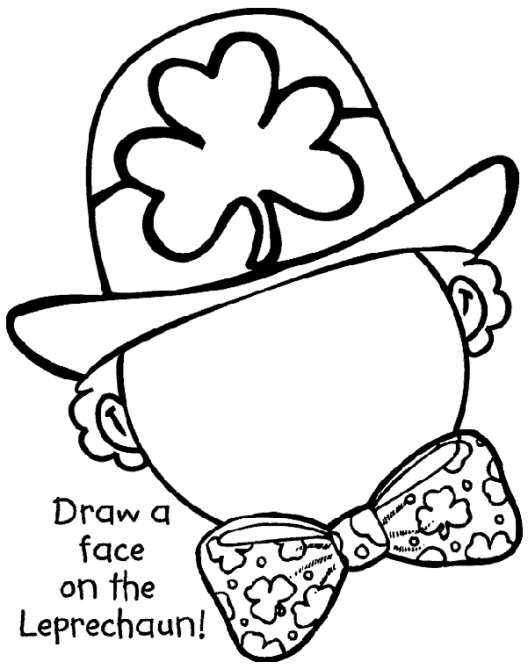 Supplement 1
Supplement 1
Supplement 2
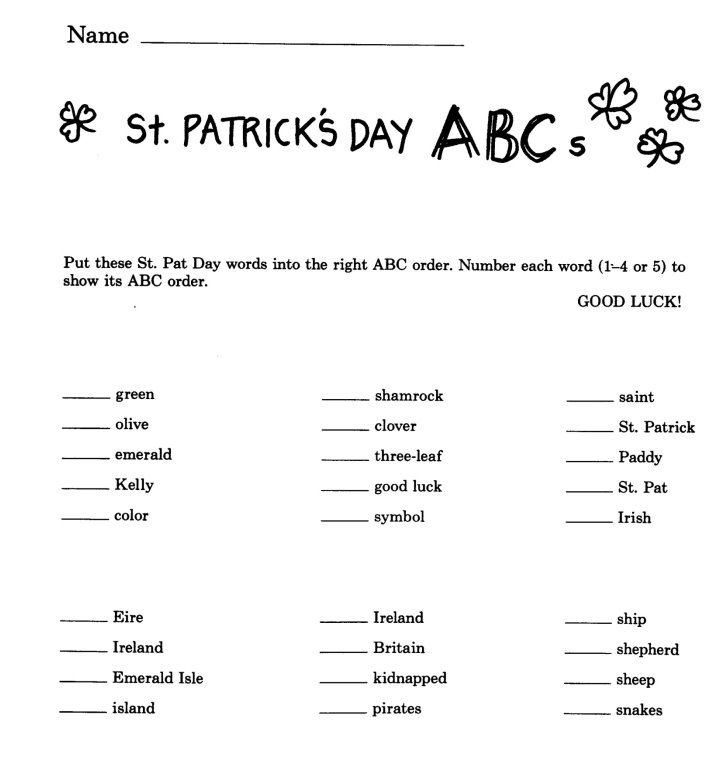
Список використаних джерел
- Лінгвокраїнознавство. Англомовні країни : [підручник для студ. та викладачів вищих навч. закладів] / А.Б. Гапонів, М.О. Возна ; за заг. ред. В.В. Бондаренко. Вінниця : НОВА КНИГА, 2005. 464с.
- Чи знаєте ви? Е.Р. Ліндер, Л.К. Маслова, Р. І Циба. – К.: Рад. шк., 1980. – 152 с.
- http://pandia.org/text/78/021/152.php
- http://kopilkaurokov.ru/angliiskiyYazik/meropriyatia/117935
- http://languagebonus.ru/pervoklassnikam/2014-12-28/den-svyatogo-patrika
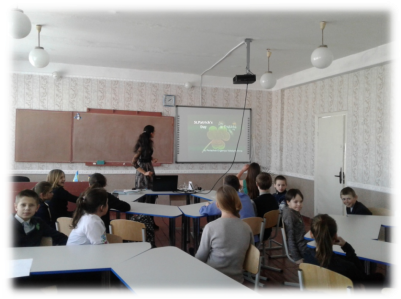
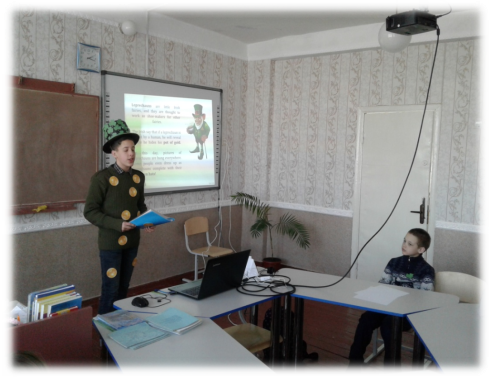
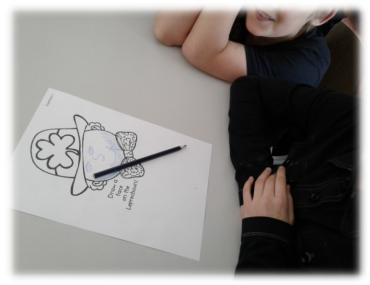
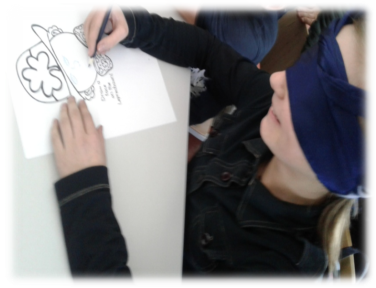
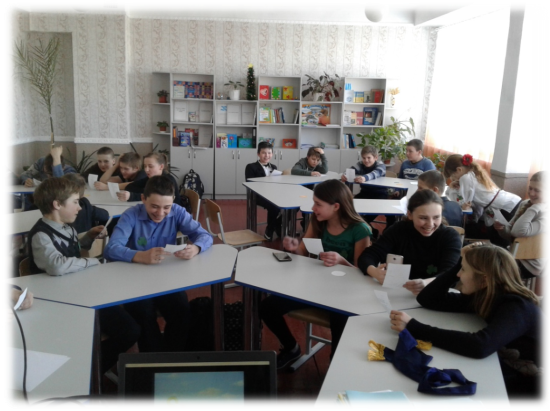
Юнаківська загальноосвітня школа I-III ступенів
Сумської районної ради
Сумської області
Відкритий урок
з англійської мови у 8 класі
на тему:
«Музика у моєму житті»
(Music in my life)
Підготувала:
учитель німецької
і англійської мов
Петрачок Є. В.
Юнаківка 2018 рік
Тема: Музика
Unit: Music
Урок 41
Клас 8
Підтема: Музика у моєму житті (Music in my life)
Мета:
Практична: вдосконалювати вміння учнів використовувати англійську мову, як засіб спілкування в рамках теми: «Музика у моєму житті»; розширювати лексичний запас з даної теми;
Освітня: організувати діяльність учнів з повторення і активізації лексичного матеріалу теми; удосконалювати вміння і навички говоріння, аудіювання, читання та письма; навчати презентувати свою роботу.
Розвивальна: розвивати логічне мислення, активність, увагу, пам’ять; сприяти формуванню комунікативних навичок і умінь, пізнавального інтересу до даної теми; розвивати вміння розуміти зміст іншомовного тексту, виділяти необхідну інформацію.
Виховна: виховувати любов до музики, гарний смак; сприяти вихованню шанобливого, толерантного ставлення до іншої культури; виховувати позитивне ставлення до вивчення англійської мови.
Обладнання: комп’ютер, проектор, мультимедійна презентація, відеозапис тексту «The Beatles», пісня, роздатковий матеріал з завданнями, робочий зошит.
Методи: інтерактивні (групова робота, «мікрофон»), ведення дискусії, діалогічні (ведення бесіди), випереджаючі завдання.
Тип уроку: урок розвитку мовленнєвої компетенції, застосування знань, навичок і вмінь.
Очікувані результати:
правильно вживати лексичні одиниці з даної теми;
вирізняти потрібну інформацію при відеозаписі тексту з даної теми;
спілкуватися у межах обраної тематики та основі переглянутого відео;
чітко та обґрунтовано висловлювати свою думку.
ХІД УРОКУ
І. ПІДГОТОВКА ДО СПРИЙНЯТТЯ ІНШОМОВНОГО СПІЛКУВАННЯ
Greeting 1. Привітання
T.: Good morning, children! Stand up, please, and greet our guests!
Ps: Good morning , teacher!
T: I’m glad to see you! Sit down. Who’s absent today? What is the weather like today? How are you?
T: I think you are ready for the lesson and have a good mood.
Aim 2. Повідомлення теми та мети уроку.
T: Our lesson is devoted to music. Today we are going to speak about the role of music in your life, your favourite musical styles and tastes. We will read the text, watch and listen to the video about the famous and popular British group “The Beatles” you learn new interesting facts about it. So our today’s topic is “Music in my life”.
Warming up 3. Уведення в іншомовну атмосферу.
T: Let’s divide in two teams. It was a competition of two teams: “Music fans” and “Music Stars”. Who will be ….
Look at the screen, please, and read the expressions of famous people
“Music is the universal language of mankind”.
Music is the medicine of the breaking heart”
“Where words fail, music speaks”
T: Do you agree with these wonderful quotations?
P1: Yes, I do, because we can’t imagine our life without music.
P2: I thing life without music would be boring!
P3: In my opinion, music helps us in difficult situations.
P4: Sometimes people speak different languages and don’t understand each other but we all understand the language of music because it’s universal and unites people of different countries
II. ОСНОВНА ЧАСТИНА УРОКУ
Check on Homework 1. Перевірка домашнього завдання.
T: By the way let’s check your homework? What must you do at home?
P1: At home we must write a composition on the topic: “Music In My Life”.
T: Now choose one representative from your group/team, who will present it to everybody your ideas and tastes of music world. And then you will make a mind map and tell us: “Why people listen to the music”
Vocabulary Revision 2. Повторення й активізація ЛО теми.
- T: Now make a mind map and tell us: “Why people listen to the music”
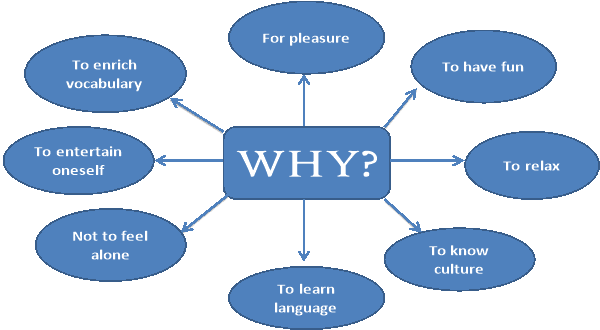
- And what music styles do you know? What adjectives can we use to describe music styles?
(Учні по черзі називають стилі музики і заповнюють на дошці Word Maps)
- Put the words in the box into the correct columns. Then add more words of your own to each column.
|
rock and roll, musician, punk, pop, accordion, bass guitar, piano, saxophone, lead guitar, cello, heavy metal, songwriter, jazz, flute, drums, classical, singer, pop star, folk, guitarist, violin, rock, producer |
||
|
Instrument |
Person |
Types of music
|
What music do you like? Why? What types of music do you hate and why?
T: Well done! And now fill in the table using the words from the box

|
Music that… |
is called … music |
|
• is modern and popular among young people • is a type of pop music with a very strong beat • has strong rhythm and was originally played by African Americans • is traditional in a particular country • is serious and traditional in style |
|
Т: Good of you! Look at the pictures and define the type of music. What singers are associated with this type of music?

Key:
1 – gospel (проповідувати Євангеліє);
2 – reggae;
3 – rock-and roll;
4 – jazz;
5 – rock;
6 – folk;
7 – country.
- Гра “Noughts [nɔ:ts] and Crosses”
Учитель малює на дошці основу для гри:
|
1 |
2 |
3 |
|
4 |
5 |
6 |
|
7 |
8 |
9 |
Учні діляться на команди. Кожна з команд по черзі обирає цифру , а вчитель читає відповідне запитання. Якщо гравці відповідають на нього, то вчитель замість цифри на дошці ставить їхній значок:х або 0. Перемагає команда,що має більшу кількість хрестиків або нуликів.
Questions:
- A person who composes music is a c……. .
- A large group of people who play classical music together is called an o …….. .
- A person who sings opera is an o…………
- A person who plays the cello is a c ……. .
- The person who stands in front of the orchestra is a c………. .
- A very popular song is a s ……. .
- A number of songs, usually about 10, on a CD is an a……… .
- A group of musicians is a b ….. .
- A musical show is a c………….
Listening Comprehension 3. Розвиток навичок аудіювання з узагальненим розумінням прослуханого і виділенням необхідної інформації
T. Have you ever heard about the group the Beatles? It was extremely popular in the sixtieth. What do you know about it?
(Учні роблять свої припущення та висловлюють їх).
For today I have prepared some information about the history of this band and their musical style. Listen to the story, look at the screen and be ready to answer the questions. They are given on the cards. Read them for yourselves.
Choose the correct answer:
- Where did the Beatles come from?
- London;
- Liverpool;
- Los Angeles.
- How many persons were in the band?
- 6;
- 3;
- 4.
- Who was not a Beatle?
- George Harrison;
- Elvis Presley;
- Paul McCartney;
- Ringo Starr;
- John Lennon.
- When did the Beatles first become famous and popular?
- in the 1940s – 1950s;
- in the 1960s – 1970s;
- in the 1980s – 1990s.
- What style of music t did the Beatles play?
- classical music ;
- pop music;
- rock- and - roll.
- What instrument did John Jennon play?
- lead guitar;
- rhythm guitar;
- drums.
- Who wrote most of the songs?
- Paul McCartney and Ringo Starr Paul McCartney;
- Paul McCartney and John Lennon;
- Brian Epstein and George Harrison.
- How many albums had they recorded by 1970?
- 7;
- 10;
- 13.
- Which of the Beatles films was a cartoon?
- A Hard Day’s Night;
- Help!
- Submarine.
- When did the Beatles broke up?
- in the 1960 s;
- in the 1970 s;
- in the 1980.
11. Which Beatle died a violent death in 1980?
a) Ringo Starr;
b) John Lennon.
ІІІ. ЗАКЛЮЧНА ЧАСТИНА УРОКУ
Homework 1. Домашнє завдання
T: Your home task is ex.2 a,b p. 143
Summarizing 2. Підведення підсумків уроку
T: Our lesson is coming to the end. Did you enjoy it? I hope you did. You were very active and hardworking and get following marks: ………….
Let our lesson be over in unusual way. Let wonderful music sound for you! (There sounds the melody ”What a wonderful world”. May there be this music in your hearts! THANK YOU FOR THE LESSON!

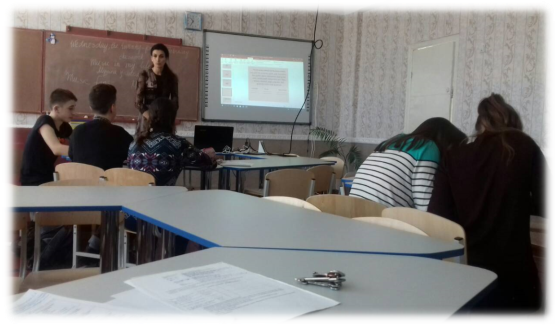
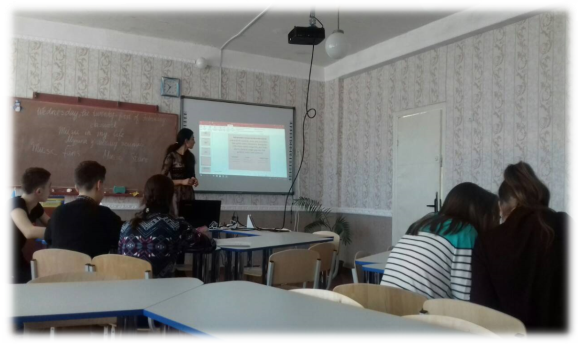
Конкурс стінніок:
- «Piece Is Possible»;
- «The Earth Day»;
- «My Favourite Food»;
- «My Favourite Film»;
- «The School Of My Dream»;
- «Places Of Interest In London»…..
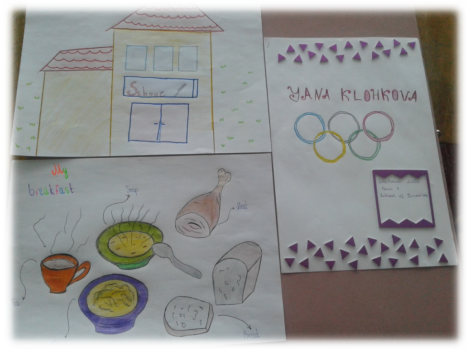
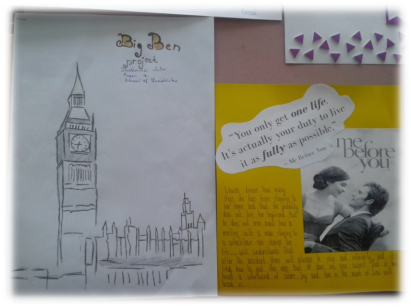
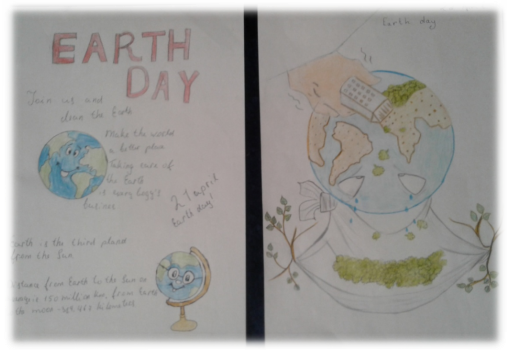
Урок – віртуальна подорож «Welcome to London!»
Мета: сформувати уявлення учнів про столицю Великобританії, поглибити знання учнів про визначні місця Лондона; виховувати почуття поваги до пам’яток культури й потребу в пізнанні світової культури країни, мову якої вивчають, стимулювати і підтримувати інтерес до вивчення англійської мови.
Обладнання: мультимедійна презентація Power Point, тематичні малюнки, буклети «Welcome to London!».
Хід уроку
Teacher: Well…Today we’ll make an imaginary trip to one of the most interesting and exciting city of the world, to London. We’ll learn new things about the history and modern life of the city, visit the most interesting sights of London, and watch video film.
Now London is one of the largest cities in the world. More than 10mln people live in London and its suburbs. London is a city of striking contrasts. Here one can come across the past and the present, the old and the modern, live side by side in mutual tolerance and respect.
No excursion can be held without a guide. Let me introduce our guides. They are …
Guide 1: In London, one can see architecture of different centuries and styles. It is inseparably connected with the history of the city. Traditionally London is divided into several parts: the City, Westminster, the West End and the East End. The city first started in the place, which is known as the City. It is the oldest part and the Heart of London, it’s commercial and business centre. It occupies a territory of a square mile. During a day, it is full of people, nearly a million people work there.
Guide 2: We start from Trafalgar Square is a very famous square where on New Year’s Eve people gather to celebrate. At midnight people jump into the fountains fully clothed and enjoy themselves. It is also the geographical center of London. It was named in memory of Admiral Nelson’s victory in the battle of Trafalgar in 1805. The tall Nelson’s Column stands in the middle of the square. The square is popular with visitors, who come to relax by the fountains there or to feed the pigeons. Trafalgar
Square has become famous as a rallying point for all kinds of demonstrations, marches and political meetings. Some people say it is the most beautiful place in London.
Guide 1: Now we are coming to Piccadilly Circus. This is a square in the central part of London, where we can see people of many nationalities. It is the meeting point of six streets. It is famous for its brightly lit neo advertisements at night. London’s famous restaurants and best-known theatres and cinemas are on Piccadilly Circus.
London is very rich in museums and art galleries. If you are fond of painting you’ll go to the National Gallery or to the National Portrait Gallery or to the Tate Gallery. It has got a fine collection European paintings. There are about 300 oils and 19000 watercolours and drawings. Not far away is the British Museum - the biggest museum in London. The present building was built in 1852. It contains a priceless collection of ancient manuscripts, coins, sculptures, ets, and is famous for its library.
Buckingham Palace
Guide 2: Buckingham Palace is the official residence of Her Majesty the Queen and her family. It isn’t open to the public. Buckingham Palace has 600 rooms, a swimming pool, a cinema, a ballroom, a nuclear cellar and a garden, which is like a private park. In summer the Queen gives three garden parties for about 9,000 guests.
The ceremony of the Changing of the Guard at Buckingham Palace is a great tourist attraction. It takes place daily in the forecourt at 11.30 a.m. and lasts half an hour. To the sound of music, the guardsmen in their traditional bearskins arrive and pass the palace keys to another group.
Guide 1: The Houses of Parliament
Westminster is the historic, the governmental part of London. The Houses of Parliament in London, known also as the Palace of Westminster is the place where members of Parliament gather to make laws. The Parliament of the UK of Great Britain and Northern Ireland consists of the House of Lords and the House of Commons. The House of Lords consists of just over 1,000 members of the different grades of nobility - dukes, marquises, earls, viscounts and barons. In the House of Commons there are 650 members.
Guide 2: Westminster Abbey is a symbol of English tradition at its best. It is more than nine hundred years old. There are many monuments and statues there, many English kings and queens are buried there. It is famous for the Poet’s Corner. It is one of the most famous and beautiful churches in London. This church has two tall towers. In 1952 Queen Elizabeth was crowned there.
Guide 1: The Clock Tower, which contains the hour-bell called Big Ben, is known the world over. The bell is named after Sir Benjamin Hall. The tower is 96.3 meters high. It weights 13 tons. Besides Big Ben there are four Little Bens which strike before Big Ben.
Guide 2: Now we are crossing Tower Bridge over the river Thames. It was opened in 1894. It takes its name from the Tower of London. The hydraulic mechanism can raise and lower the bridge in about one and a half minutes. The covered walkway between the two towers is open to the public and offers a spectacular view of London.
Guide 1: The Tower of London is a very old building, - nine hundred years old! In the early days of England the English kings lived in the Tower. Then it was a prison where many people died. The Tower has been used as a royal palace, an observatory, an arsenal, a state prison, and many famous and infamous people have been executed within its walls. Now the Tower of London is a museum housing the National Collection of Amour and Royal Regalias, and many tourists from other countries come to see it. They see the dark stone halls with small windows and thick doors. Something that should not be missed is the Crown Jewels, a priceless collection of every jewel known.
The Tower is still guarded by the Yeomen Warders, the famous Beefeaters, who wear a traditional sixteen-century uniform. The symbol of Tower is 6 ravens which live there. The legend says that if the ravens leave, the Tower and the country will fall.
Guide 2 ST. PAUL’S CATHEDRAL
Everybody coming to London for the first time wants to see St. Paul's Cathedral. This is the third cathedral with this name which London has had. The two others were burnt down, the first in 1086 and the second in 1666.
Christopher Wren was an architect who had already built many buildings. Now, in 1675, he started on his greatest work. For 35 years the building of St. Paul’s Cathedral went on, and Wren was an old man before it was finished.
From far away you can see the huge dome with a golden ball and cross on the top. The inside of the cathedral is very beautiful. After looking around, you can climb 263 steps to the Whispering Gallery, above the library, which runs round the dome. It is called this because if someone whispers close to the wall on one side, a person with an ear close to the wall on the other side can hear what is said. Then, if you climb another 118 steps, you will be able to stand outside the dome and look over London.
Guide 1: Double-decker - a bus with two passenger decks. They are a common sights in Britain. London has more than three thousands double-deckers. At many seaside resorts Double-decker with an open top desk are used in the summer season for tourists. Taxis in London are old-fashioned black cars.
Guide 2 Telephone box
Sir Giles Gilbert Scott designed a telephone box in the 1920s. In 1985 more of them were replaced with modern telephone boxes. People protested so much at the old ones were put back in London. Now you can see them.
Teacher: So, our trip is coming to its end. We well know that there is so much to see in London, that even Londoners can always find new places of interest. And it’s impossible to see and discuss all of them for such a short period. We’ll do it at the next lessons.
1


про публікацію авторської розробки
Додати розробку
